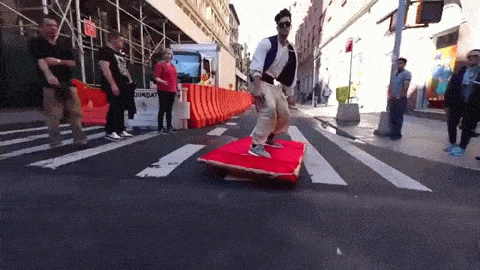Sometimes you need a good sweat and if you’re like [JoeCMorgan] you can’t be bothered travelling to a sauna, it needs to come to you. He took care of that problem by building the SaunaVan.
Many moons ago, SaunaVan started life as a Vauxhall Combo van. At some point it was abbreviated from a Van to a trailer. You can’t tell from the picture above but this van no longer has a cab up front. Like many trailers, it eventually became a storage unit, which is how [Joe] found it. He cleaned out the old tires, tents, and detritus, and started planning out a mobile sauna. The van’s interior was already stripped, so the first order of business was to cut a hole in the front wall of the van. The hole became a steel “nose” which housed the chimney. All this allowed [Joe] to place his 1920’s Husqvarna stove as far forward as possible.
The van’s gas tank was cleaned out and became a water reservoir, complete with a pump that is safe to use with water. A shower placed outside allows for a quick cool down after a hot sauna. The biggest job was building the interior. [Joe] measured out the wheel wells and cut panels to form the interior walls of the van. Some fiberglass insulati on between the wood and the outside wall ensured the van would stay nice and toasty. [Joe] put in some pre-finished flooring and added benches to cover the wheel wells. The benches hide storage for wood, and the wiring for the van’s sound system. Speaking of which, your sweaty friends won’t be happy without some tunes so [Joe] added speakers and a radio. Check out the video after the break to see it all in action. This thing is just begging to be parked next to the Carpool DeVille.
on between the wood and the outside wall ensured the van would stay nice and toasty. [Joe] put in some pre-finished flooring and added benches to cover the wheel wells. The benches hide storage for wood, and the wiring for the van’s sound system. Speaking of which, your sweaty friends won’t be happy without some tunes so [Joe] added speakers and a radio. Check out the video after the break to see it all in action. This thing is just begging to be parked next to the Carpool DeVille.
One thing [Joe] didn’t mention was a fresh air intake, which is vital on a setup like this. We’d also add a carbon monoxide detector just to be sure combustion gasses don’t build up inside the van’s body.
The first firing of the antique stove was a complete success. The newly christened SaunaVan’s temperature got up over 90°C (194°F)! That might sound hot to some, but it’s not far outside the norm for a sauna. The low humidity helps keep things comfortable, but we wouldn’t recommend staying inside for more than a few minutes.
Continue reading “Creepy Van Parked Down The Street Is A Nomadic Sauna” →







 on between the wood and the outside wall ensured the van would stay nice and toasty. [Joe] put in some pre-finished flooring and added benches to cover the wheel wells. The benches hide storage for wood, and the wiring for the van’s sound system. Speaking of which, your sweaty friends won’t be happy without some tunes so [Joe] added speakers and a radio. Check out the video after the break to see it all in action. This thing is just
on between the wood and the outside wall ensured the van would stay nice and toasty. [Joe] put in some pre-finished flooring and added benches to cover the wheel wells. The benches hide storage for wood, and the wiring for the van’s sound system. Speaking of which, your sweaty friends won’t be happy without some tunes so [Joe] added speakers and a radio. Check out the video after the break to see it all in action. This thing is just 
 Luckily, he had the right skills and tools available to make sure this DIY hack lives up to the Streetfighter cred of his bike. The important parameter for him was to log the Air / Fuel mixture ratio so he could work on the carburation. Along the way, he seems to have gone a bit overboard with this build, but the end result is quite nice. The build centers around a
Luckily, he had the right skills and tools available to make sure this DIY hack lives up to the Streetfighter cred of his bike. The important parameter for him was to log the Air / Fuel mixture ratio so he could work on the carburation. Along the way, he seems to have gone a bit overboard with this build, but the end result is quite nice. The build centers around a 








